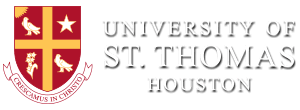Be Bold Blog
The University of St. Thomas (UST) is Houston’s Catholic University, committed to the Catholic intellectual tradition and the dialogue between faith and reason. Our blog is dedicated to helping you explore your future career possibilities and how to make the most of your college experience.
4 Benefits of Bilingual Education You May Not Know
With an expanding national population, it is evident the United States will continue to grow and diversify over the upcoming decades. While English is the most commonly spoken language, there are millions of Americans who speak Spanish, Chinese, Tagalog, Vietnamese, Arabic and others. Though the U.S. does not specifically have an official language, academic institutions have often opted for a complete nix of languages other than English. This submerging strategy constantly receives mixed perspectives on potential and success, often undermining the language barrier’s direct impact on students’ social stability and academic performance.
Contrary to belief, some data suggests that children learn and perform best when they are taught in both their native and target language. Dr. Ginny Torres-Rimbau, director of the bilingual/dual language Education Program at the University of St. Thomas, shares her perspectives on the unique advantages of receiving a bilingual education.
What is bilingual education?
Unless you’re a teacher, you may not know the difference between programs like English as Second Language (ESL) and bilingual or dual language education. Before we go any further, let’s break down the key characteristics that define these modalities.
Traditional ESL programs work only with children who didn’t grow up speaking English. These students typically spend their time in a separate classroom with teachers who are focused only on building these language skills. The goal is to teach them enough English so that they can rejoin the rest of their classmates and assimilate into the dominant culture.
In contrast, a bilingual education program teaches in both English and the target language across all subjects. Educators can adapt the structure to whatever works best for their students. This could look like the first half of the day in English and switching after lunch or using the target language for certain subjects. With this model, English learners and native speakers share a classroom and work together to increase their proficiency in both languages.
According to Dr. Torres-Rimbau, the dual language model is the gold standard. While all kinds of language learning programs have value, she explains that “As educators, we know what works best and it’s bilingual immersion.”
4 Intriguing benefits to dual language education
“The research is quite strong. If a monolingual child starts a dual language program at five or six years old, they are going to have substantial cognitive, academic performance and cultural awareness benefits,” Dr. Torres-Rimbau shares.
Join us as we expand on these topics below.
Increased cognitive abilities
Research suggests that the brains of children who begin learning multiple languages early on in life — from birth to around age seven — might actually develop differently. Young minds are incredibly receptive and capable of absorbing, storing and sorting through massive amounts of nuanced information. Kids who are doing all of this in multiple languages have even more opportunities to make connections, identify patterns and learn through trial and error. Studies have shown that bilingual children are more creative and have more executive function (the ability to pay attention) than their monolingual peers.
While more long-term research is needed, there is good evidence that speaking more than one language offers benefits that last a lifetime. One Canadian study of English/French-speaking Alzheimer’s patients showed that bilingual adults performed better on cognitive function tests than monolingual adults, even though they had more advanced brain atrophy. Scientists suspect that this might be a result of changes in brain structure.
Improved academic performance
Studies have shown that all children benefit from bilingual education, regardless of their native tongue. One example comes from a study at a school district in Illinois. Researchers found that not only did minority Spanish-native students in a two-way immersion program outperform their Spanish-speaking peers in other programs on both reading and math — but majority English-native students enrolled in the immersion program also outperformed their English-native peers in mainstream classrooms.
A different study of public schools in Portland, Oregon, showed similarly positive results. In that school district, 10 percent of students were randomly selected by a lottery to join dual language classrooms that offer Spanish, Japanese or Mandarin Chinese. A four-year randomized trial concluded that these bilingual students outperformed their peers in English-reading skills by a full school year’s worth of learning by the end of middle school.
Empathy and cultural awareness
Bilingual education programs are multicultural by default, as it’s impossible to separate language from culture and vice versa. Dual language classrooms are rich in diverse experiences and backgrounds, as they are typically comprised of both native English speakers and recent immigrants from other countries.
Children learn empathy (the ability to understand other people and perspectives) through repeated interaction. Dr. Torres-Rimbau recalls that in the elementary classes she taught in Texas, “All the five- and six-year-olds are paired up with bilingual buddies — one Spanish speaker and one English speaker — and they help each other learn.”
In her experience, she’s seen these kids have an advantage over students who did not attend a bilingual program. “They are aware that people are different around the world and that there are many cultures and languages,” she explains. “They grow up more accepting and tolerant.”
Equity and inclusion in the classroom
No matter how much support and guidance you have, learning to speak in a foreign language will be frustrating at times. And it’s even more isolating and discouraging if you’re one of a small group who can’t connect with the rest of the community. In education settings, it’s not just the students who suffer from this disconnect. Communication and cultural barriers make it difficult for parents and families to fully engage in school activities.
Dual language classrooms place equal emphasis on both the native and target languages. Both are treated as valuable, unique and worth studying. This creates an environment where students and their families can communicate comfortably not only with other students, but with teachers and staff. Students who feel like they belong are much more likely to be engaged with their coursework, stay in school and graduate from high school.
Increased access to bilingual education starts with trained teachers
Now that you’re aware of some of the many benefits of bilingual education, you may be wondering why there aren’t more programs available in your area. One of the main reasons is the lack of qualified educators. This shortage is especially noticeable in Texas, where bilingual education is mandated by law for children in grades K-3. Dr. Torres-Rimbau shares that one school district in Houston needs 600 more bilingual teachers just to meet demand.
If you’re interested in learning more about this rewarding career, read “7 Reasons to Consider Becoming a Bilingual Teacher.”
Ready to take the next step? Visit the Dual Language Education program page at UST for more information about this innovative degree.
Ready to take the next step?
Related articles
About UST
The University of St. Thomas (UST) is Houston’s Catholic University, committed to the religious, ethical and intellectual traditions of Catholic higher education. For more than 70 years, we’ve been graduating students like you into successful careers in medicine, education, business, public administration and more – throughout Houston and across the globe.




